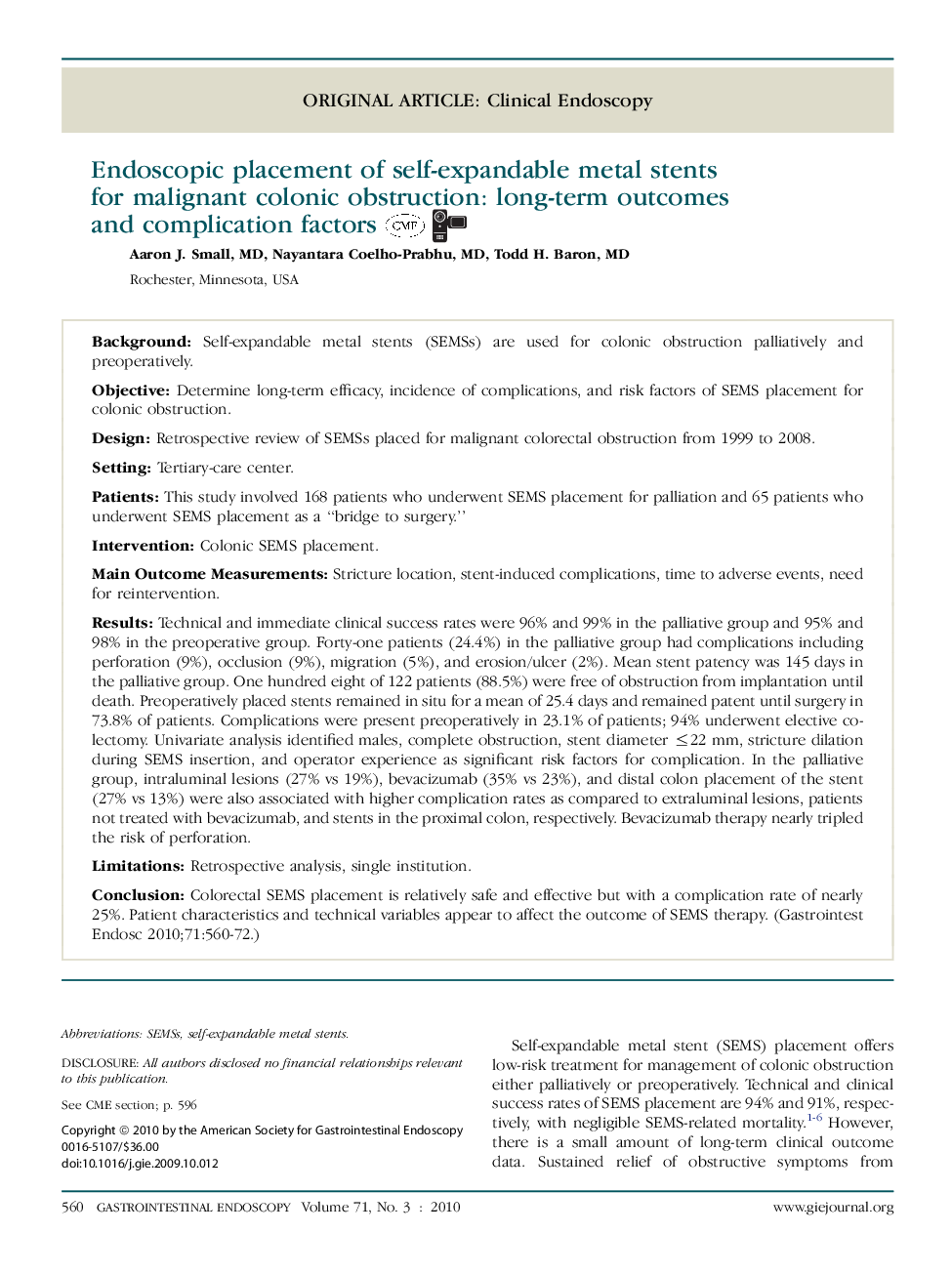| Article ID | Journal | Published Year | Pages | File Type |
|---|---|---|---|---|
| 3307337 | Gastrointestinal Endoscopy | 2010 | 13 Pages |
BackgroundSelf-expandable metal stents (SEMSs) are used for colonic obstruction palliatively and preoperatively.ObjectiveDetermine long-term efficacy, incidence of complications, and risk factors of SEMS placement for colonic obstruction.DesignRetrospective review of SEMSs placed for malignant colorectal obstruction from 1999 to 2008.SettingTertiary-care center.PatientsThis study involved 168 patients who underwent SEMS placement for palliation and 65 patients who underwent SEMS placement as a “bridge to surgery.”InterventionColonic SEMS placement.Main Outcome MeasurementsStricture location, stent-induced complications, time to adverse events, need for reintervention.ResultsTechnical and immediate clinical success rates were 96% and 99% in the palliative group and 95% and 98% in the preoperative group. Forty-one patients (24.4%) in the palliative group had complications including perforation (9%), occlusion (9%), migration (5%), and erosion/ulcer (2%). Mean stent patency was 145 days in the palliative group. One hundred eight of 122 patients (88.5%) were free of obstruction from implantation until death. Preoperatively placed stents remained in situ for a mean of 25.4 days and remained patent until surgery in 73.8% of patients. Complications were present preoperatively in 23.1% of patients; 94% underwent elective colectomy. Univariate analysis identified males, complete obstruction, stent diameter ≤22 mm, stricture dilation during SEMS insertion, and operator experience as significant risk factors for complication. In the palliative group, intraluminal lesions (27% vs 19%), bevacizumab (35% vs 23%), and distal colon placement of the stent (27% vs 13%) were also associated with higher complication rates as compared to extraluminal lesions, patients not treated with bevacizumab, and stents in the proximal colon, respectively. Bevacizumab therapy nearly tripled the risk of perforation.LimitationsRetrospective analysis, single institution.ConclusionColorectal SEMS placement is relatively safe and effective but with a complication rate of nearly 25%. Patient characteristics and technical variables appear to affect the outcome of SEMS therapy.
